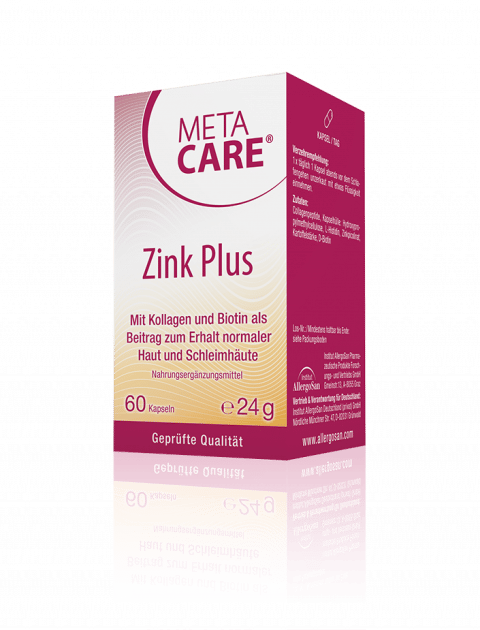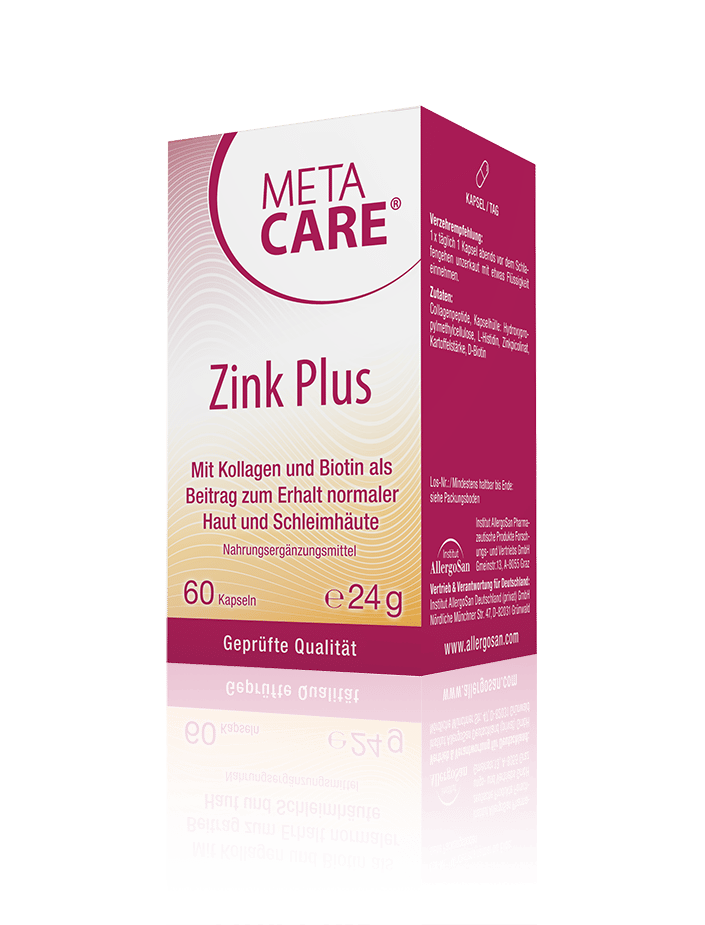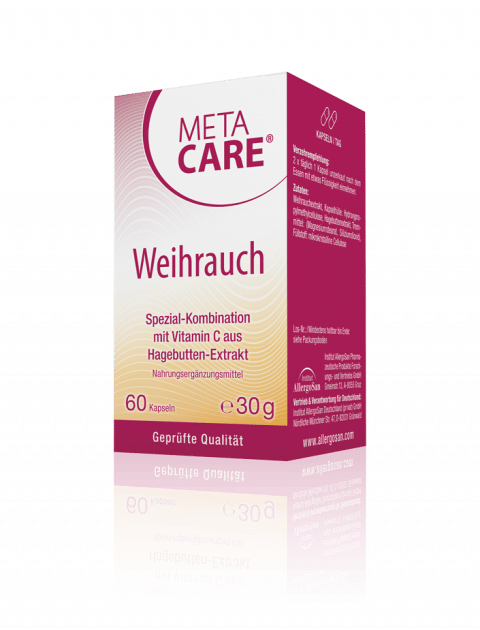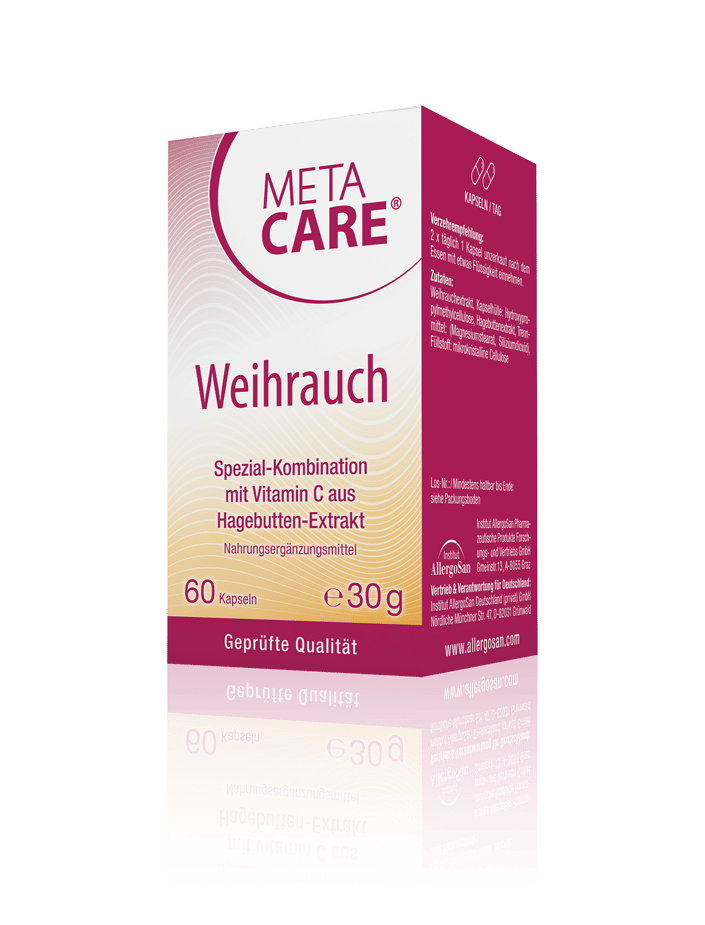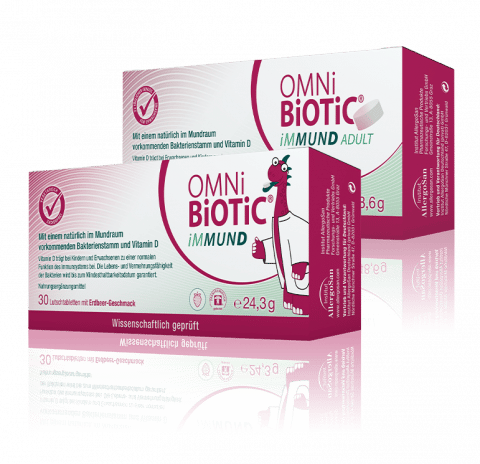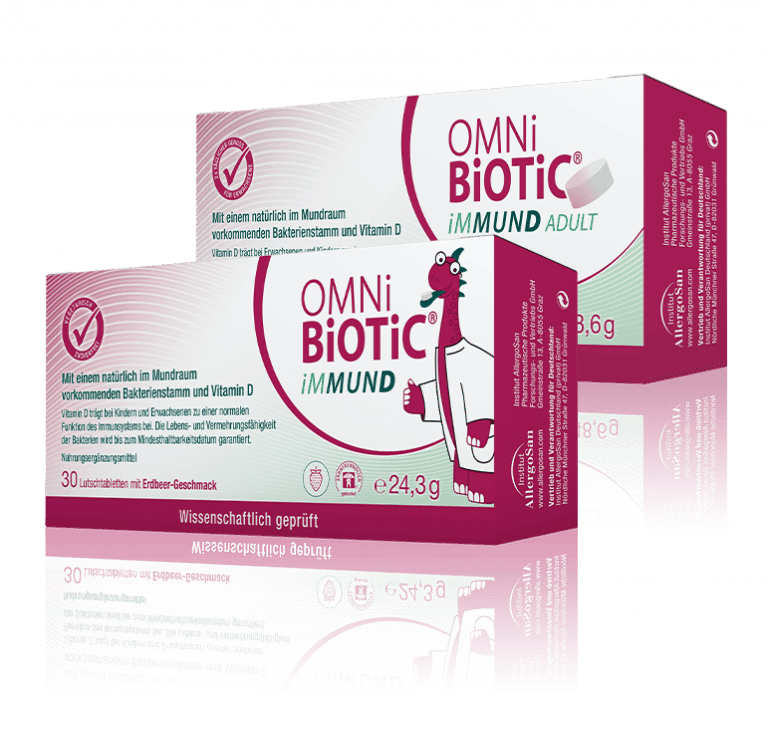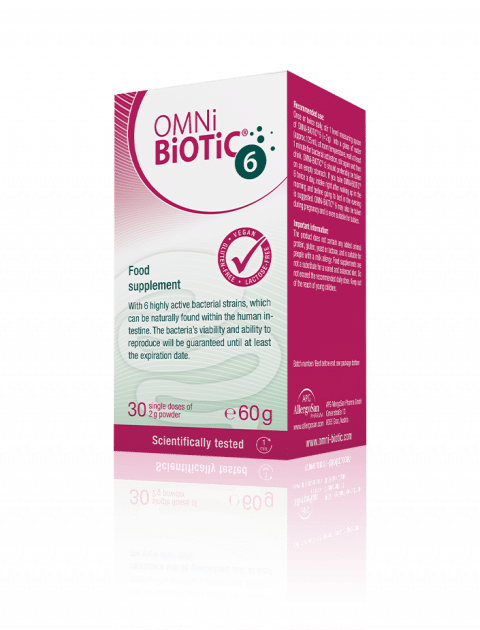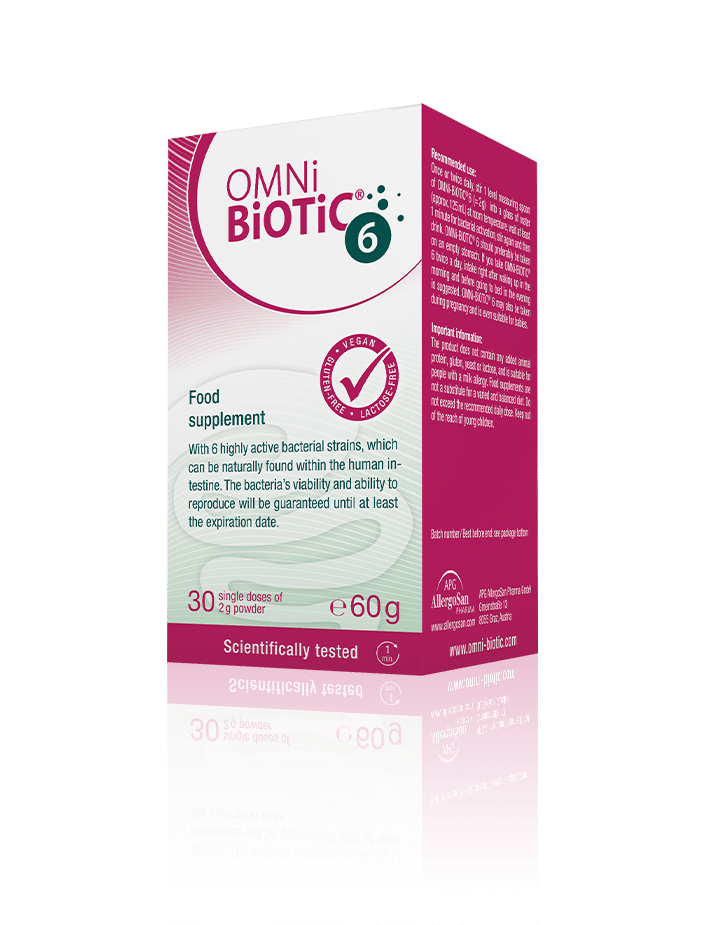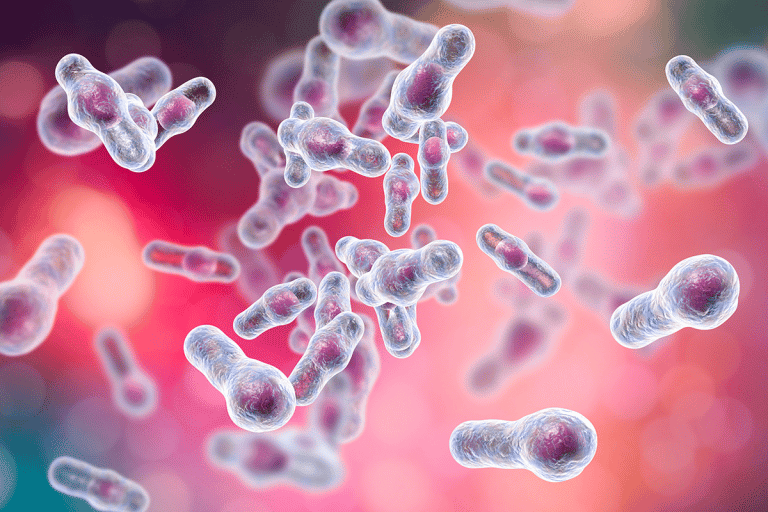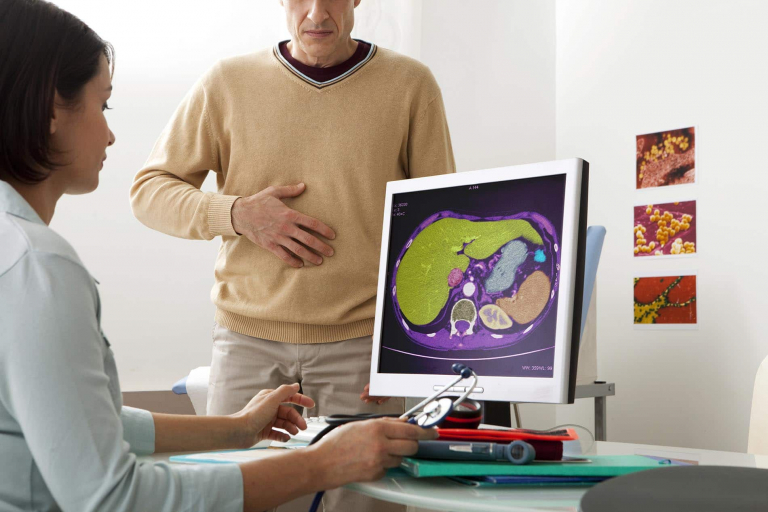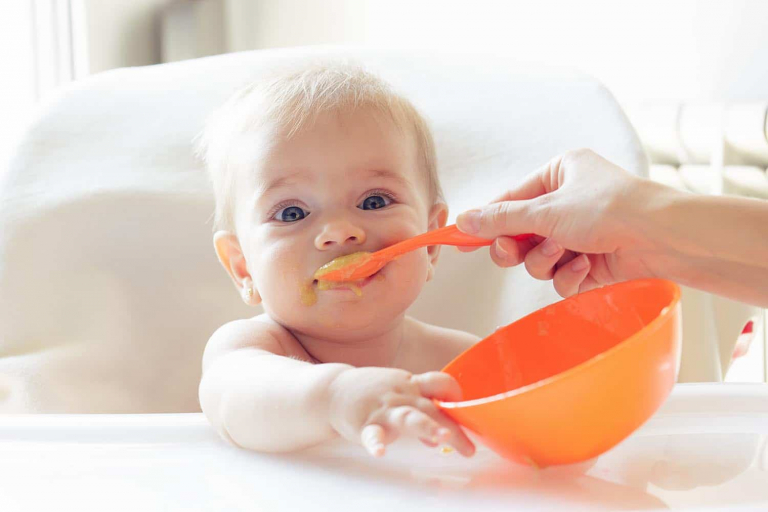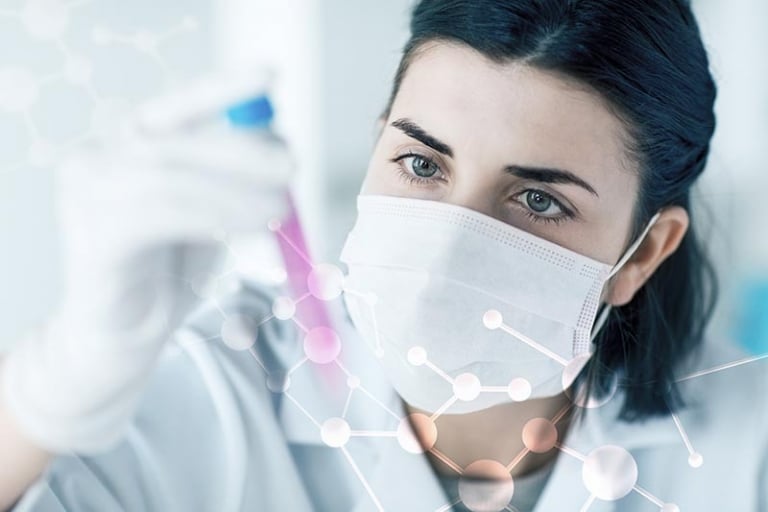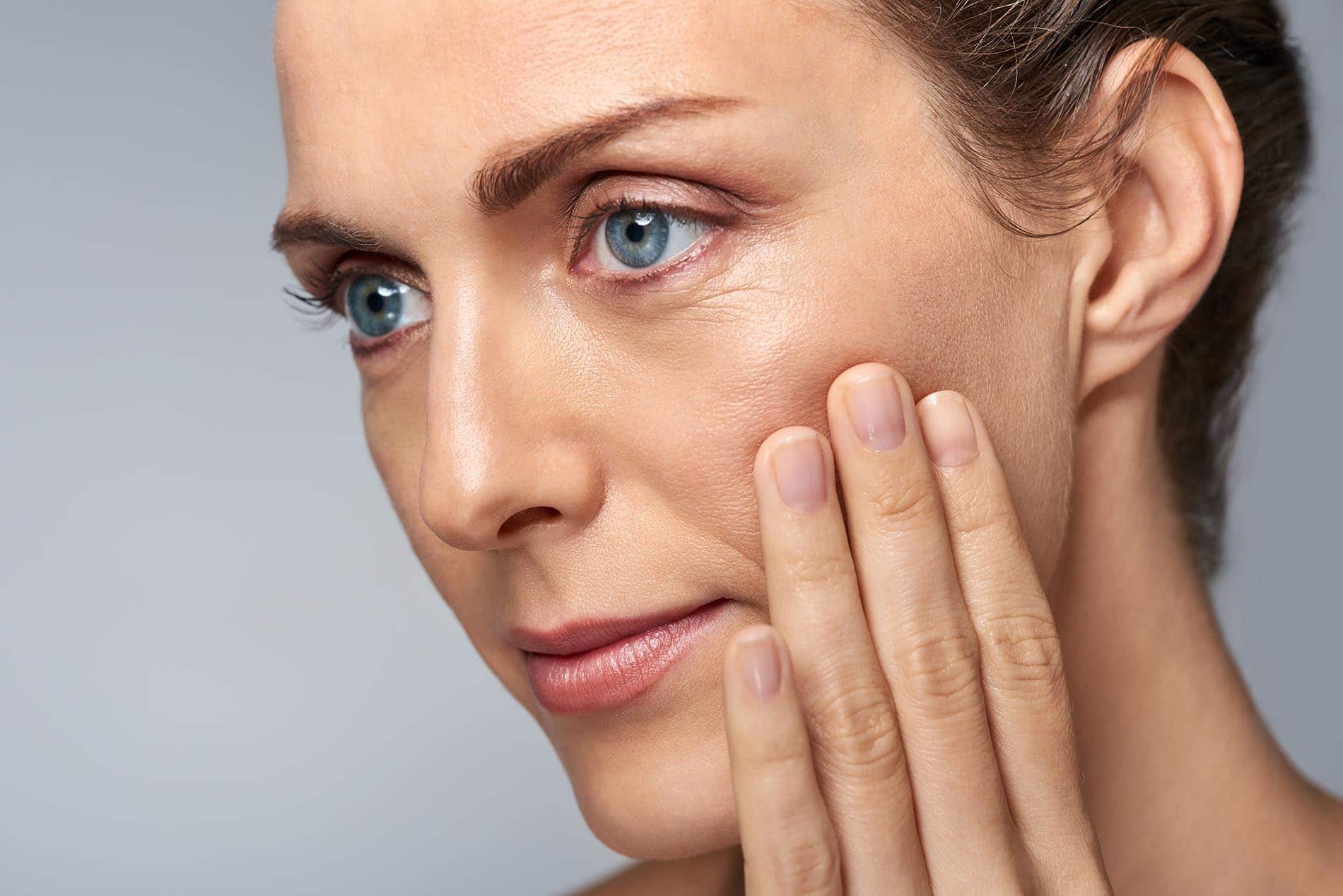
The skin microbiome and intestinal bacteria

Univ.-Prof. Dr. Christine Moissl-Eichinger*
The importance of our intestinal bacteria is already well known – however, very few people know that our skin is also buzzing with life. Mag. Anita Frauwallner recently interviewed Prof. Dr Christine Moissl-Eichinger from the Centre for Microbiome Research at the Medical University Graz concerning this topic. The expert not only explains the importance of the skin’s microbiome but also its connection with our intestinal bacteria.
Mag. Anita Frauwallner: The Allergosan Institute mainly deals with the microbiome in the digestive and urogenital tract. So, my question is: Can you give us an idea about the skin’s microbiome?
Univ.-Prof. Dr. Christine Moissl-Eichinger: The skin represents a vast ecosystem of microorganisms with a surface of nearly 2 square meters and is the home to bacteria, archaea, viruses, fungi and mites. There are much more microorganisms on the skin of a single human than there are people on the planet, roughly 100 billion. There are possibly about 1.000 different microbe species that can be found on our skin. The majority are found on the top-most layer of the epidermis and in hair follicles. The most common are the following 4 microbe groups: Actinobacteria, Proteobacteria, Firmicutes and Bacterioidetes.
The skin microbiome is subject to a certain geography, in other words, the composition of the microbial community is dependent on local factors. Fatty facial skin, dry skin on the lower arm, moist armpits – the microbiome adapts to the local micro-ecosystem. All in all, the skin microbiome doesn’t have it easy as the skin’s ecosystem is very variable and undergoes extreme changes; the microbes need to cope with high concentrations of salt, low pH-values and dehydration.
Generally speaking, the skin microbiome is very individual and is subject to, depending on the body part, great fluctuations. The microbiome on the feet undergo the most extreme changes, whereas the microbiome is relatively stable on other parts – even on the palms.
The microbiome on our skin is in constant contact with our environment: The human body is surrounded by a „cloud of microbes“ – through which microbes are transmitted to objects, people, animals etc. in our surroundings. Thanks to the specificity of microbial patterns even, for example, a phone can be matched to its owner.
Mag. Frauwallner: The intestinal wall serves us as a triple barrier against all harmful substances that enter our bodies with our food. Does the skin and its bacterial population serve a similar purpose?
Prof. Moissl-Eichinger: The microbes play an important role in maintaining the protective barrier for our skin. They protect us against pathogens, control the skin’s low pH-value and support our immune system. From the beginning of our development, the immune learns to tell the difference between useful and pathogenic microorganisms. For this purpose, our skin needs to come into contact with microbes.
Studies were able to show that adult mice were more sensitive to germs that they had never been in contact with. However, if the skin of newborn mice is exposed to such microbes, their immune system gets used to the inhabitants and remembers them for the rest of the mouse’s life. Interestingly, these first acquaintances can only take place over a short period of time but are decisive for a lifelong tolerance.
Mag. Frauwallner: Are there certain „key bacteria“ on our skin that play an especially important role like the main bacterial strains in our intestines?
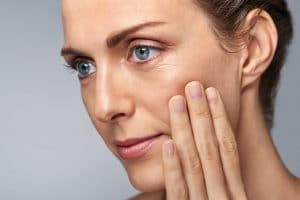
Prof. Moissl-Eichinger:Microbes such as Corynebacteria, Propionibacteria and Staphylococci are the most common on the skin. Propionibacteria are mainly found in fatty areas, whereas Corynebacteria prefer moist areas. Besides these bacteria, other microbe groups, such as Malassezia (a lipophilic fungus) and so-called Thaumarchaeota (archaea), also play a big role. Certain microorganisms, including several strains of Propionibacterium acnes, can suppress other – possibly pathogenic – microbes with the help of antimicrobial substances. Some microbes, on the other hand, have a calming effect on the immunes system, a common trait of Staphylococcus epidermidis.
Mag. Frauwallner: Are there any special topics that are particularly interesting or offer us new insights at the moment?
Prof. Moissl-Eichinger: Especially interesting is the previously mentioned Thaumarchaeota that belong to the microorganism group of the Archaea. We were able to show that the occurrence and incidence of these Traumarcheota depend on the dryness of the skin and a person’s age: In particular, older people and children, as well as people with very dry skin, carry these microorganisms on their skin. They act as an important „cleaning service“, improve the skin’s pH-value and even our body odour by breaking down nitrogen compounds.
Mag. Frauwallner: Nowadays we know that it takes almost 3 years after birth for the intestinal microbiome to establish itself. What is it like with the skin microbiome – and which factors influence it?
Prof. Moissl-Eichinger: The skin microbiome is a mixture of temporary and permanent microorganisms. During and immediately after birth, the microbes from the mother, the family and the environment are transmitted to the new-born baby: If the child is born naturally, vaginal microbes dominate the skin, whereas the microbes from the skin of the mother and father dominate after a C-section. Premature babies that are initially taken care of in the ICU take on the microbes from their (hospital) environment.
The skin microbiome is influenced by a variety of factors including diet, hygiene, age, gender, disease and the intake of medication.
A skin imbalance is easy to determine after excessive hygiene. Lately, more and more people are advocating for less hygiene. This „Cleansing Reduction“ is even practised by several celebrities: Just showering twice a week is required.
Taking a second look at hygiene products is always worthwhile: So-called „antibacterial“ soaps often contain substances that promote resistances. Certain substances were even banned in the USA. And that’s a good thing, normal soaps are more than enough for normal hygiene.
Mag. Frauwallner: And now the most exciting question: How does the skin microbiome depend on the bacterial colonisation of our intestines?
Prof. Moissl-Eichinger: We assume that the skin’s health is connected to the intestinal microbiome via the immune system. That is how a low diversity in a child’s microbiome is associated with the development of neurodermatitis later in life. Furthermore, a large percentage of patients with Inflammatory Bowel Diseases also have skins problems; which probably also has to do with the immune system.
The immune system probably has to come into contact with a multitude of microbes very early in a child’s development in order to tell the difference between helpful and pathogenic microbes.
Mag. Frauwallner: An increasing amount of people suffer from skin problems. Can we now say that the skin microbiome of many people has become unbalanced? And how does that happen? Which diseases are associated with this imbalance?
Prof. Moissl-Eichinger: Age, diet, clothing, cosmetics, UV radiation and hygiene affect the skin microbiome. The composition of the microbial community is also regulated by the interactions between human and microbial cells. If the normal function of the immune system is disrupted, the microbiome is often derailed. As is the case with psoriasis or neurodermatitis.
For a long time, it was assumed that Propionibacterium acne was the cause of acne. Interestingly, people with acne carry the same amount of these microbes on their skin as healthy people. There seems to be a small but subtle difference that is possibly related to the function of the microbes (even closely related microorganisms can take on different functions).
Different forms of rosacea are associated with an increase of the hair follicle mite Demodex. These mites have their own microbiome that causes inflammation on the human skin.
Neurodermatitis is linked to a colonisation with Staphylococcus aureus with an additional diversity reduction of the local microbiome.
Psoriasis is characterised by extremely dry skin. It is assumed that psoriasis – as with Crohn’s disease – is caused by an intolerance of the immune system towards microbes. However, it isn’t quite clear which microorganisms are involved, as the skin areas affected by psoriasis show a normal skin microbe composition, albeit with an increased number of microbes.
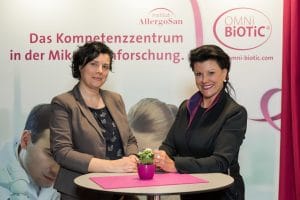 Mag. Frauwallner: Do you have any experience regarding the influence of probiotics on the skin microbiome via the intestines? And with which skin diseases have you had success?
Mag. Frauwallner: Do you have any experience regarding the influence of probiotics on the skin microbiome via the intestines? And with which skin diseases have you had success?
Prof. Moissl-Eichinger: There is some experience involving probiotics. Some positive effects of probiotics were found, especially with eczema and psoriasis – indirectly via the intestine. Even the early intake of probiotics in children had a positive effect on the later development of eczema. More research is desperately needed – on the one hand, regarding the diagnosis of skin diseases and, on the other hand, regarding the treatment with probiotics and prebiotics.
A possible candidate for probiotic use is Staphylococcus epidermidis. Succinate, a fermentation product of Staphylococcus epidermidis, can suppress the growth of Propionibacterium acnes. Interestingly, Propionibacterium acnes could be used to subdue, for example, antibiotic-resistant Staphylococcus strains. This was proven on the methicillin-resistant „USA300“, a germ that can cause fatal pneumonia. In such cases, it makes more sense to use probiotics against this germ, than making it stronger through antibiotic treatment.
Mag. Frauwallner: What do you think about creams with probiotic bacteria? They’re usually not alive – do they still have an effect?
Prof. Moissl-Eichinger: It would be absolutely great if we could apply the helpful bacteria directly to the skin. Some of these products are already on the market. Among others, liquids with living microbes are provided and should reduce body odour.
The underlying hypothesis is that probiotics strengthen the skin barrier, increase moisture, protect against UV rays and therefore prevent skin ageing, which partly appears to be successful. Positive effects were reported especially with rosacea and acne.
What’s also fascinating is that cell lysates, i.e. components of cells, appear to have a regulatory function. The use of prebiotics is also being studied, but we may already be taking advantage of prebiotics: We assume that the added urea in skin creams serves as a source of nitrogen for special microbes and therefore enhance their activity.
However, all experts can agree that much more research is needed concerning this topic.
Mag. Frauwallner: It’s also intriguing that we can „transplant“ the skin microbiome. How could our readers picture this and against which diseases can we use this method? What kind of results can we expect?
Prof. Moissl-Eichinger: Sadly, all previous, serious studies were done on mice. In these tests, microbes were isolated from healthy skin and transmitted to the skin of mice suffering from neurodermatitis. Surprisingly, the mice that received the microbes from the healthy skin showed a significant improvement. A similar approach would also be possible on humans, and there are high hopes that this procedure could work just like a stool transplant. Here, specially prepared stool from healthy individuals is transmitted to sick patients.
Mag. Frauwallner: What do you expect from probiotic medicine for the skin microbiome in the future?
Prof. Moissl-Eichinger: Pre- and probiotics that are skilfully or even individually chosen have the huge potential to help skin patients. Both provide a viable alternative, however much more research is needed.
*Univ.-Prof. Dr Christine Moissl-Eichinger is the head of the Centre for Microbiome Research at the Medical University Graz. She recently discovered a „wound dressing“ out of microbes that could help generate new tissue.

